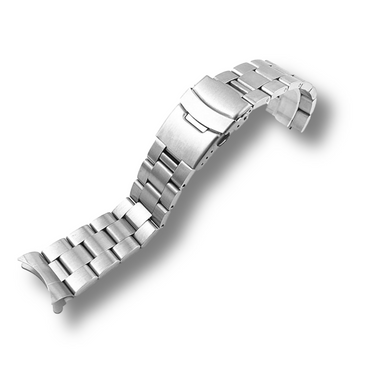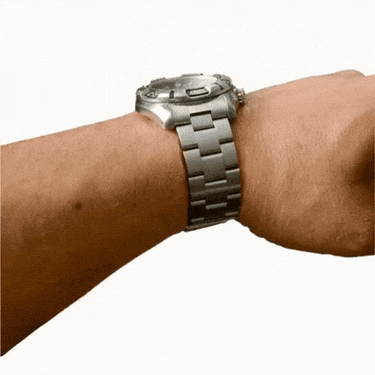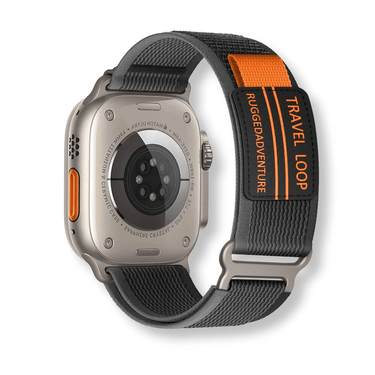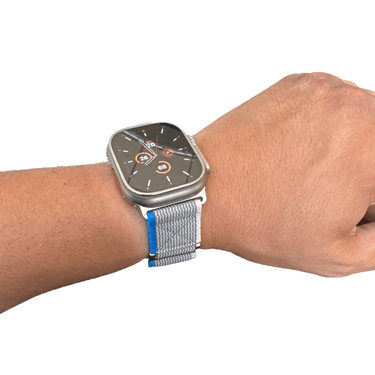The Importance of Choosing the Right Watch Winder Motor
If you're a watch enthusiast, you probably already know what a watch winder is and why it's important. But for those who are new to this world, let me explain: a watch winder is a device that keeps automatic watches wound when they're not being worn.
Most automatic watches have a power reserve of around 48 hours, which means that if you don't wear your watch for more than two days, it will stop running. A watch winder solves this problem by simulating the movement of your wrist and keeping your watches wound and ready to wear at all times.
Now, let me tell you why choosing the right motor for your watch winder is so important. The motor is essentially the heart of the watch winder – it's what makes everything else work.
Without a good motor, your watch winder won't be able to keep your watches properly wound, and might even damage them in the process. So if you want to get the most out of your automatic watches and ensure their longevity, it's crucial to choose a high-quality motor that meets all your needs.
Why You Can't Just Choose Any Motor
You might be thinking: "But can't I just choose any old motor for my watch winder? After all, they all do pretty much the same thing." Well, yes and no. While it's true that different motors will generally do the same job – i.e., wind your watches – there are several factors that can make one motor better suited to your needs than another. For example, some motors are more reliable than others and less likely to break down or malfunction over time.
Others may be designed specifically for certain types of watches or winding patterns (e.g., bidirectional vs unidirectional winding). And then there are factors like noise level and power consumption, which can make a big difference depending on where and how you plan to use your watch winder.
What You Should Look for in a Watch Winder Motor
So, what should you be looking for when choosing a motor for your watch winder? Well, there are several key factors to consider.
First and foremost, you want a motor that's reliable and built to last. Look for motors that are made from high-quality materials and have a proven track record of durability.
You'll also want to think about the specific needs of your watch collection. If you have multiple watches with different winding requirements, you'll need a motor that can accommodate those differences.
Similarly, if noise level is a concern (e.g., if you're planning to keep your watch winder in your bedroom), look for motors that are designed to be quiet. Don't forget about budget considerations.
While it's true that you generally get what you pay for when it comes to watch winders, there are still plenty of affordable options out there that offer good value for money. Just make sure not to skimp too much on the motor – after all, it's the most important part of the whole device!
Understanding Watch Winder Motors
The Importance of Understanding How Watch Winder Motors Work
Before diving into the different types of watch winder motors available in the market, it's important to have a basic understanding of how they work. A watch winder motor is essentially a small electric motor that is used to rotate a watch to keep it wound and prevent it from losing its accuracy and precision.
The motor rotates the watch at a predetermined speed, which mimics the natural motion of the human wrist. This motion varies between different watches, so it's important to choose a motor that is compatible with your specific watches.
Different Types of Watch Winder Motors Available in The Market
There are several types of motors available in the market when it comes to watch winders. The most common are AC-powered, battery-powered, and USB-powered motors. AC-powered motors are considered the most reliable and powerful type of motor available on the market.
They offer consistent power output and can run for extended periods without interruption or pause. Battery-powered motors are another popular option that offers more flexibility than their AC counterparts, as they do not need to be plugged in all the time.
However, they can be less powerful than AC-powered options and may require frequent battery changes depending on usage. USB-powered motors offer ultimate convenience as they can be powered by any USB charger or port, but they may not offer enough power for larger collections or high-end watches.
Understanding how watch winder motors work and being aware of different types available is crucial when making a purchase decision. Depending on your collection size, budget, and personal preferences one type may suit you better than others.
Consider Your Collection
When it comes to choosing the right watch winder motor for your watches, it's important to consider your collection. Different watches have different winding requirements, and this can greatly affect which motor will work best for you. So, before you go out and buy a motor, take a look at your collection and consider what each watch needs.
The Importance of Considering Your Collection
One of the biggest mistakes people make when choosing a watch winder motor is not considering their collection. They assume that any motor will work for any watch, but this simply isn't true. Some watches require more winding than others, and some even have specific winding directions.
For example, if you have a Rolex that requires 650 turns per day in one direction, you'll need a motor that can handle that amount of turns in that direction. If you have multiple watches with different winding requirements, then you'll need to choose a motor that can accommodate all of them.
Different Watches Have Different Winding Requirements
Not all watches require the same amount of winding. Some require more turns per day than others depending on their brand or age.
For example, older mechanical watches may require fewer turns per day than newer ones because they are less efficient at storing energy. In addition to turn requirements, some watches also require specific winding directions.
This means that the motor must be able to wind the watch in one specific direction or alternating directions in order to function properly. Therefore it's crucial that before buying a watch winder motor one should meticulously examine their collection first so as not to damage an expensive or rare timepiece due to improper handling and operation by an incompatible device.
Power Source Options
When it comes to power source options for watch winders, there are a few different choices available. The most common options include battery-powered, AC-powered, and USB-powered options. Each option has its own set of pros and cons that should be considered before making a decision.
Battery-Powered
Battery-powered watch winders are an attractive option for those who want portability and convenience. They do not require any external power source or cords and can be easily moved from room to room or even taken on the go. However, they do have some downsides.
Batteries need to be replaced on a regular basis which can become costly over time. Additionally, if you forget to change the batteries or they run out of charge unexpectedly, your watches will stop being wound which could lead to them losing their accuracy.
AC-Powered
AC-powered watch winders are powered directly from an electrical outlet which means that they do not require any batteries and provide continuous winding for your watches. They are also typically more powerful than battery-powered options which allows them to handle larger collections with ease. However, they come with a downside as well; they need to be placed near an electrical outlet limiting their portability.
USB-Powered
The final option is USB-powered watch winders which draw their power from a USB port instead of a traditional electrical outlet or batteries. This makes them incredibly portable as they can be easily plugged into laptops or other devices with USB ports and taken anywhere you go! But unfortunately, the downside is that most USB ports only output 5V of electricity which means that these watch winders may not be able to deliver enough energy needed by certain motor types.
Choosing the right power source for your watch winder will depend on your needs and preferences. If you value portability and convenience, a battery-powered or USB-powered option might be the best choice.
But if you have a larger collection and want continuous winding without having to worry about battery replacements, then an AC-powered watch winder may be the way to go. It is important to weigh the pros and cons of each option before making a decision.
Noise Level: Keep it Quiet
The Importance of Noise Level
When you’re investing in a watch winder, noise level is an essential factor to consider. If you’re like me, you don’t want to keep hearing the loud hum of the motor all day long.
Not only is it annoying, but it can also disrupt your work or disturb your peace when trying to relax. Therefore, choosing a motor that produces minimal noise is crucial.
Quiet Motors for Happy Customers
Luckily, some motors are designed to be quieter than others. So when shopping for a watch winder motor, make sure to look for ones that advertise silence as one of their key features. Some manufacturers have invested in technology that ensures minimal noise levels while still maintaining a powerful and efficient motor.
For example, some motors come with a noise reduction feature such as ball bearing construction or dampeners that minimize vibrations and sound output. Other motors use advanced electronics and microprocessors that control speed and direction of rotation--which also contribute towards reducing noise levels.
Final Thoughts
When looking for a watch winder motor, make sure to factor in the importance of noise level as it contributes significantly to your comfort and enjoyment. Noisy motors can ruin your experience by making sleep difficult or interrupting your peace while working at your desk. Invest in quiet motors with high-performance capabilities so you can enjoy the benefits of having well-functioning watches without any unnecessary disturbances.
Durability & Longevity
The Importance of Choosing a Durable Watch Winder Motor
When it comes to choosing the right watch winder motor, durability and longevity should be at the top of your priority list. After all, no one wants to invest in a motor that will break down after just a few months or years of use. That's why it's crucial to consider the overall build quality and materials used in the motor's construction.
One key feature to look for when shopping for a durable watch winder motor is heavy-duty construction. Motors made with high-quality materials such as stainless steel or brass are more likely to withstand wear and tear over time than those made with cheap plastic parts.
Additionally, motors with sealed bearings and gears are less likely to fail due to moisture or dust, which can accumulate over time. Another factor that contributes to a motor's durability is its design.
Motors with fewer moving parts tend to be more reliable than those with many intricate components that can break easily. Additionally, motors designed for long-term use often have features like thermal protection or overload protection built-in, which can help prevent overheating or damage from power surges.
Features That Contribute To Longevity
In addition to heavy-duty construction and smart design, there are other features you should look for when choosing a watch winder motor that will last for years. One important feature is adjustable winding settings.
A good watch winder motor should allow you to adjust the number of turns per day (TPD) and direction of rotation for each individual watch in your collection so that you're not over-winding your watches. Another feature that contributes greatly to longevity is quiet operation.
Motors with excessive noise levels tend not only to be annoying but also indicate potential issues such as faulty bearings that may cause future problems within the mechanisms in their operation. It's important to choose a watch winder motor that comes with a warranty or guarantee of some kind.
Motors that have been rigorously tested and inspected before leaving the factory are more likely to be reliable than those that haven't, and a warranty can give you peace of mind knowing that if something does go wrong, you'll be covered financially. Choosing the right watch winder motor is about more than just finding something that will work for your watches.
It's about investing in a high-quality product that will last for years and provide reliable performance over time. By focusing on durability, longevity, and features like adjustable settings and quiet operation, you can ensure that your watch winder motor is up to the task of keeping your collection running smoothly for years to come.
Budget Considerations
When it comes to purchasing a watch winder motor, budget can play a significant role in the decision-making process. While there are some budget-friendly options available in the market, it's important to keep in mind that they may not always be the best choice for your watches' needs.
High-end motors may come with a hefty price tag, but they often offer a range of features and benefits that are worth investing in. There's no denying that some motors are more expensive than others due to their brand or certain features they possess.
However, don't let the cost deter you from investing in a high-quality motor that will protect and prolong the life of your timepieces. Think of it as an investment rather than just another expense.
A watch winder motor is an essential accessory for any watch enthusiast who wants to ensure their collection stays healthy and functional.
Features vs. Brand
When it comes to choosing between features and brand, it's important to weigh up what matters most to you as an individual collector. Some people prioritize brand over everything else, while others put more emphasis on specific features such as noise level or power source options. There are different types of motors from various brands available at different price points – finding one that suits your specific needs at the right price point requires research.
Final Thoughts
Choosing the right watch winder motor requires careful consideration of various factors – including your collection size and type of watches you own, power source options available, noise level required for where you'll place your winder(s), durability & longevity desired from the product itself plus most importantly how much money you're willing/able to invest into this accessory based on its value compared with other things already owned or purchased thus far within one's collection/experience level as an owner & enthusiast. Remember: Investing in a high-quality motor can ultimately save you money and protect your timepieces in the long run. So take the time to research, compare, and invest wisely in a motor that will keep your watches running smoothly for years to come.

























